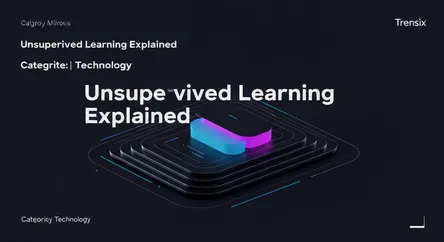Technology
Unsupervised Learning Explained

Discover unsupervised learning, an AI that finds hidden patterns in unlabeled data. Learn how it powers clustering, anomaly detection, and more.
What is it?
Unsupervised learning is a type of machine learning where algorithms are trained on data that has not been labeled or categorized. Unlike supervised learning, there is no predefined 'correct' answer. Instead, the AI's goal is to explore the data and find meaningful structures, patterns, or groupings on its own. The most common techniques include clustering, which groups similar data points together, and association, which identifies rules that describe large portions of the data. Think of it as an AI learning by observation rather than by being taught with examples.
Why is it trending?
The sheer volume of data being generated today is immense, and most of it is raw and unlabeled. Manually labeling this data is often impractical or too expensive. Unsupervised learning provides a powerful way to analyze these vast datasets and extract valuable insights without human intervention. It's crucial for exploratory data analysis, helping businesses and researchers discover hidden correlations and structures they weren't explicitly looking for. This capability makes it essential for handling big data and uncovering novel patterns.
How does it affect people?
Unsupervised learning impacts daily life in subtle yet significant ways. It powers recommendation engines on streaming services and e-commerce sites by clustering users with similar tastes. In finance, it helps detect fraudulent transactions by identifying unusual patterns (anomaly detection). Marketers use it for customer segmentation to create more targeted campaigns. It's also applied in genomics for gene sequence analysis and in cybersecurity to identify new threats. Essentially, it helps automate the process of making sense of complex, unstructured information, leading to smarter services and systems.